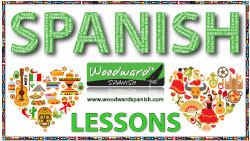Talca
Chile
History
The capital of the VIII Region has a population of approximately 200,000. The first attempt to found the city in 1692 failed and it wasn't until 1742 that José Antonio Manso de Velasco formally founded the city as Villa de San Agustín de Talca. From the beginning the town was a concentration of activity in the mill industry and exportation. Today it is a town proud of its history and its position of importance in the region.
Getting There
The train and bus stations are only one block away from each other and located ten and eleven blocks from Plaza de Armas respectively.
Upon arrival you will notice that all the streets are conveniently labeled around the Plaza de Armas, 1 Norte, 3 Oriente etc depending on the direction and distance from that main square. Norte (North), Sur (South), Poniente (West), Oriente (East).
What to Do
Museo O'Higginiano y de Bellas Artes: It was in this house that Bernardo O'Higgins signed the Chilean Declaration of Independence in 1818; it was also his childhood home. There is a large amount of colonial furniture although the collection of documents isn't very interesting. (Located on the corner of 1 Norte and 2 Oriente)
Villa Cultural Huilquilemu: A wonderful place to visit for an all encompassing look at Chilean Colonial life, history and wine. Wander through the courtyards, gardens, and rooms filled with art (mainly religious) from different time periods including modern handicrafts and wood carvings. Out back there is machinery used in farming and wine production. Best of all there is the enoteca where each of the 15 wineries in the area offers wine tasting. It is located 15 minutes outside of the city to the east and is easily accessible by public transportation.
Villa Alegre: This is a small colonial town where the streets are lined with beautiful orange trees that make the whole town look magical in autumn.
Ruta del Vino Valle del Maule: Tourists have two options when it comes to exploring any of the 15 vineyards in the area that have opened their doors to tourists. You can contact the vineyards independently, which is very easy with the helpful guidance of the Information office. However, if you don't have your own transportation it might be better to go on one of the weekend tours. Reservations should be made at least a week in advance, and tourists have the option of selecting the vineyards and/or the cultural historical sites they would like to see. Their office is found at Huilquilemu.
Reserva Nacional Altos del Lircay: Hiking here is especially great during the Autumn when all the leaves begin to change. There are several different day hike options as well as horseback riding through the park. Be sure to visit El Ladrillero a famous look out point and Laguna del Alto, a lagoon inside a volcanic crater. Camping is allowed throughout the park, but campfires are not so you'll need to bring a gas stove. It is recommended that you hire a local guide as trails are not always clearly marked. Buses go to the park entrance (65km from the Talca) daily, leaving early in the morning and returning in the afternoon, make sure you plan your hiking schedule around the buses.
Wine Spa in Tabonkö from Viña Gillmore: Here they utilize wine components to create a relaxing retreat including a bath in red wine, an exfoliating massage with Cabernet Sauvignon using medicinal herbs. It is truly a resort with its own artificial pond with canoes included. There are 14 rooms, 7 with king size beds. Tours can go directly from Santiago, primarily by train and then by private car. The tour lasts six days and nights with an in depth view of the wine making process which is unlike anywhere else in Chile.
Places to Stay
Hostel del Rio is just a couple of blocks from the Main Square. Friendly place with tourist information and Wi-Fi. A bonus is that they have off-street car parking. We stayed here the days we were in Talca and can recommend it. It gets busy so it pays to book in advance.
Casa Chueca located on the outskirts of Talca. While it might be one of the more expensive hostels in the area it is definitely worth it. They offer vegetarian cuisine prepared by their very own chef. There is a pool to relax in and an information centre too. The staff is an international mix, all of whom are incredibly friendly. Perhaps the best part about the hostel is that you can use it as a good base camp as the hostel organizes several different types of adventure tours. They also have one Spanish teacher there if you want to brush up on your traveler's Spanish.
Hostel Victoria is a nice gathering spot for travelers, and is located on the way to the Plaza de Armas from the train station (corner of 3 Sur and 4 Oriente).
Hotel Cordillera ask for one of the rooms with a shared bathroom, it is worth it for the extra space. (2 Sur 1360)
Where to Eat
Picada José Barrera offers large portions for inexpensive prices. (1 Sur 530)
El Alero de Gastón has a wide selection of food and wine. (2 Norte 858)
Rúben Tapia is a great place if you want to sample the local cuisine and be adventurous. (2 Oriente 1339)
If you still have energy after exploring around Talca it might be worth going to El Toro Bayo for dinner which is 2.5km outside of the city to the east. The old colonial house makes for an enjoyable atmosphere and the food is also very good.
If you found this guide about Talca, Chile interesting or useful, let others know about it.

